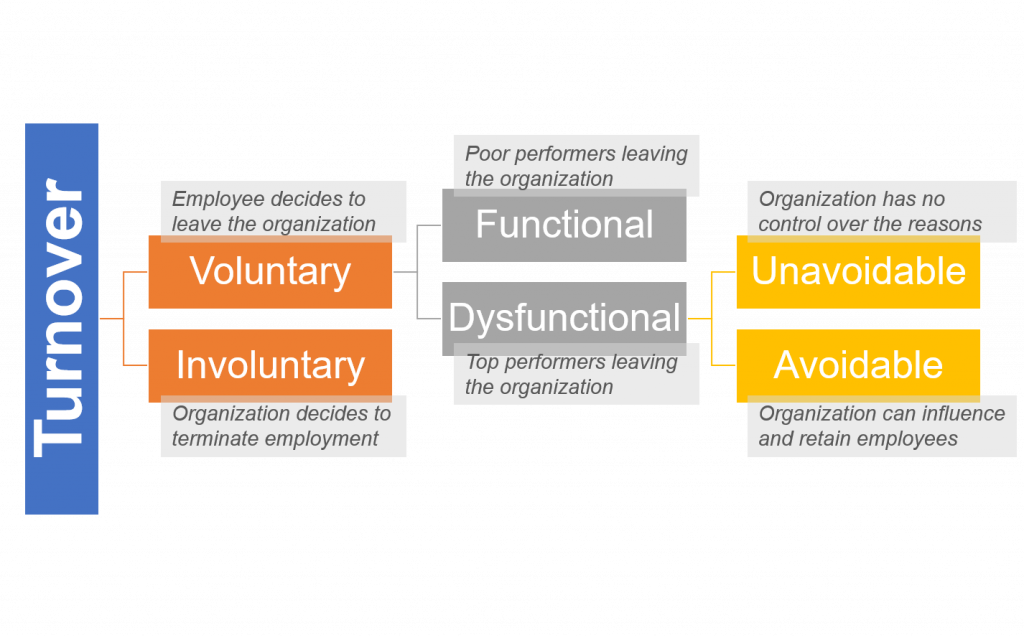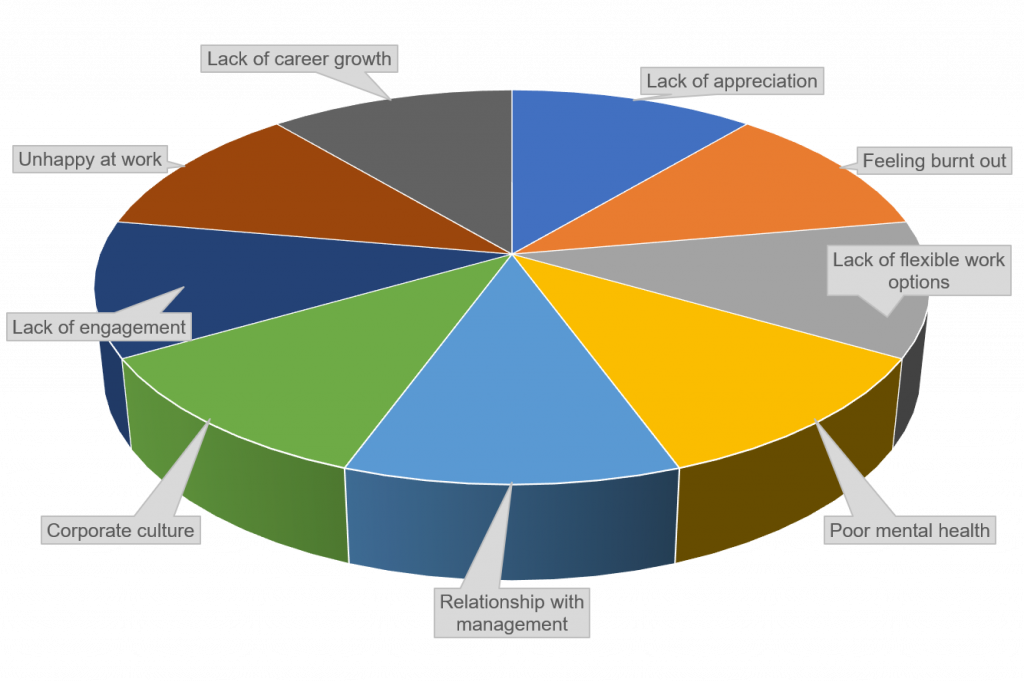How to lower turnover of employees
Employee turnover is part of any business. However, retaining employees from the beginning will reduce wasted time, effort, and cost. According to JOLTS (Job Openings and Labor Turnover Survey), 3 to 4.5 million employees leave their employer in the US every month. Attrition is usually at its highest in the first six (6) months of employment. According to the BambooHR report, about 33% of new employees quit their jobs in their first month.
Employee retention is a lot more than just keeping your employees happy. It is about retaining your talent for as long as possible. Getting a direct replacement for an employee takes about 50 to 60% of that employee’s annual salary. The total costs could range from 90% to 200% of the yearly salary.
It is essential to understand different types of employee turnover as each type has a different effect on the organization.

Employees either leave due to a push-factor or for a pull-factor. A push-factor is controllable by the organization. For example, if an employee continues to work long hours and feels burnt out, they will choose to leave. Employees decide to leave their jobs for various reasons, sometimes more than one reason. While better pay, loftier job titles, and flexible work still account for many resignations, there are many other reasons as well as myths for losing good talent. Take a look at some of the reasons:

Top 7 recommended strategies to reduce turnover:
1. Focus on recruitment:
Create a good recruitment strategy. Retention begins with recruitment. Find and hire the right talent. Employees want to be around those who inspire them. Bring in talent that will fit into the culture of the organization. Spruce up your careers page and include aspects that show the company culture. Consider gamifying recruiting assessments, like a hackathon, or video-based applications and attract top talent. Best candidates don’t always come from ivy league schools. Build professional networks, connect with colleges trade schools, and build a talent pool.
2. Create an exceptional onboarding experience:
New employees evaluate their organizations from day one and continuously validate if their choice is correct or not. An exceptional onboarding program will set up the employee for success. Paint the big picture and show them how their contributions fit the overall organizational goals. It takes about two years for an employee to hit their full potential in a role. Provide on-the-job training programs and help them shorten their learning curve. Give them context for everything they do. Assign a mentor who can be there for them and help them scale. Give them space to settle in. Schedule check-ins and offer support as needed.
3. Encourage creativity:
Creative thinking will grow your business by coming up with better solutions to problems, differentiating your product in the market amongst the competition, and increasing sales. Create an environment for employees to brainstorm without holding back their ideas. Reward good ideas by implementing them. Encourage anonymous suggestions as employees sometimes do not like to share ideas publicly. Embed innovation as part of the culture of the organization.
4. Create a good reward and recognition strategy:
Employees are the most critical asset in any organization. Tangible rewards of financial value are essential and intangible rewards like well-deserved recognition from peers and leaders. One of the top motivators at work is recognition received from leaders. Recognizing employees shows respect and appreciation for their efforts. It thereby increases the trust between the employee and the organization. Create a good incentive scheme. Monetary rewards show how much you value the employee and their contributions.
5. Create career ladders:
Employees seek growth in every role. Not receiving development is one of the biggest reasons people leave a job. Most people have aspirations in their professional life. Gone are the days when employees had to wait for their manager to get promoted so that they could move up the ladder. Create career ladders for each role. Advertise it to the team and everyone in the organization. Showcase both lateral and promotion opportunities available across the organization. Consider creating technical training programs, internships, tuition reimbursement schemes for continued education. Create short-term secondment opportunities for employees to continue building their skillset. They will be agile and be ready to take on newer roles.
6. Focus on employee wellness:
Employee wellness is essential to any business. It builds better culture, improves productivity, and ultimately the bottom line. The last two years have brought in many changes to the workplace. The line between work and home has increasingly blurred. Some options to consider are:
- Exercise programs
- Nutrition education
- Discounts for gym memberships
- Access to programs like smoking cessation and weight loss
- Health screenings
- Vaccination clinics
- Stress reduction programs
- On-call doctors
- Education on mental health to employees and leaders
- Discounts to health insurance policies for the employees and their families
A good wellness program shows the organization’s care for its employees. Create a wellness calendar for the year and promote it actively.
7. Build employee engagement:
Disengaged employees bring down the morale of everyone around them. According to Gallup’s study, only 20% of the employees are engaged at work globally. 15% of employees are actively disengaged at work. Employees like to influence decisions that affect their work. Giving them a say in decisions dramatically improves engagement. Create a system where employees can provide candid feedback. 360 degree feedback is a great tool to understand employee behavior and get development plans set in motion.
HR chatbots are another way to create a feedback channel for employees. Train the chatbot to answer all policy-related questions. Look for patterns in interaction and proactively reach out to employees. Providing updates and taking appropriate action on feedback received is as important as collecting it.
Can an organization retain all its valued employees if they want to? The answer is no. But, with good employee retention strategies, organizations can care for their employees better and retain them longer.
Related Resource: Best Hiring Practices – Top Questions Answered
Related Blog Post: Best Hiring Practices for Remote Workers


 Dr. Jaffee (M.A., Ph.D.) is a recognized expert in the field of assessments, and has created effective HR Solutions used by millions of people.
Dr. Jaffee (M.A., Ph.D.) is a recognized expert in the field of assessments, and has created effective HR Solutions used by millions of people.